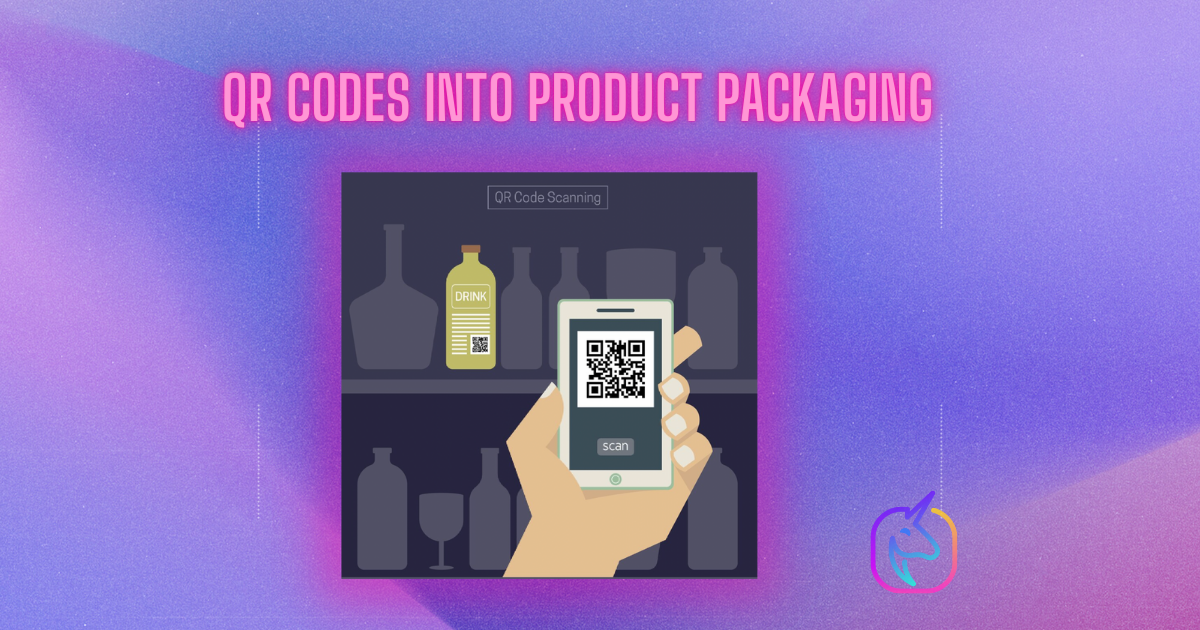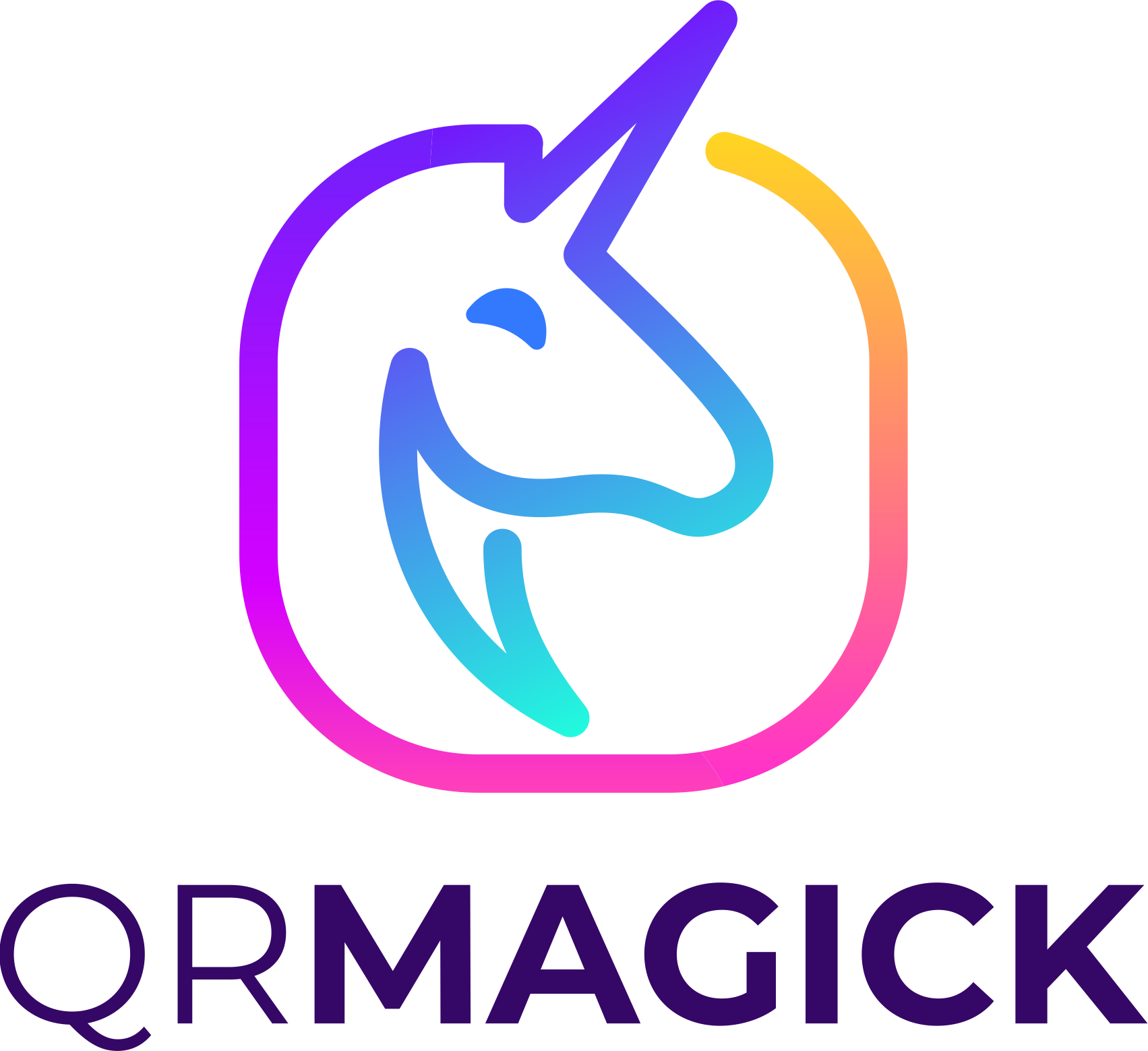QR codes are becoming a popular way to provide customers with detailed information about products. By integrating QR codes into product packaging, businesses can offer a range of benefits that can enhance the customer experience and boost sales.
One of the main benefits of QR codes on product packaging is that they allow customers to access detailed product information quickly and easily. This can include product manuals, ingredient lists, and manufacturing information. By providing this information in a convenient format, businesses can improve customer satisfaction and reduce the number of customer inquiries related to product information.
In addition to providing detailed product information, QR codes on product packaging can also be used to offer special promotions and discounts. For example, businesses can offer exclusive coupons or discounts to customers who scan the QR code on the packaging. This can help businesses increase sales and build customer loyalty by rewarding customers for their purchases.
- Here are 4 Benefits of Integrating QR Codes into Product Packaging
- Section 1: Enhancing Customer Experience
- Section 2: Improving Marketing Strategies
- Section 3: Streamlining Supply Chain Management
- Section 4: Facilitating Sales and Purchases
- Why Use QR Codes on Product Packaging?
- How to Generate QR Codes for Product Packaging with QRMAGICK
- Best Practices for QR Codes on Product Packaging
- Conclusion
Here are 4 Benefits of Integrating QR Codes into Product Packaging
Section 1: Enhancing Customer Experience
Integrating QR codes into product packaging can greatly enhance the customer experience. By providing quick access to product information and creating interactive packaging designs, QR codes can make the shopping experience more engaging and informative.
1.1: Quick Access to Product Information

QR codes can provide customers with quick access to product information such as ingredients, nutritional facts, and product origin. This can be especially useful for customers with dietary restrictions or allergies, as they can easily scan the code to determine if the product is suitable for them.
Additionally, QR codes can provide customers with more detailed product information than what is available on the packaging. For example, a QR code on a bottle of wine can lead customers to a website with information about the vineyard, the winemaking process, and tasting notes.
1.2: Interactive Packaging Design
QR codes can also be used to create interactive packaging design, which can engage customers and create a more memorable shopping experience. For example, a QR code on a cereal box can lead customers to a game or recipe that incorporates the cereal.
QR codes can also be used to provide customers with access to exclusive content such as promotional offers, loyalty programs, and product reviews. This can create a sense of exclusivity and encourage repeat purchases.
Overall, integrating QR codes into product packaging can enhance the customer experience by providing quick access to product information and creating interactive packaging design. By leveraging the benefits of QR codes, businesses can create a more engaging and informative shopping experience for their customers.
Section 2: Improving Marketing Strategies
QR codes can be an excellent tool to enhance your marketing strategy. They offer a unique way to connect with your customers and provide them with valuable information about your brand and products. Here are a few ways QR codes can help improve your marketing strategies:
2.1: Increased Brand Awareness
QR codes can help increase brand awareness by making it easier for customers to access information about your products. By scanning a QR code on your product packaging, customers can quickly learn more about your brand, its values, and its products. This can help you establish a stronger connection with your customers and build a loyal customer base.
Additionally, QR codes can help you track the effectiveness of your marketing campaigns. By using unique QR codes for each campaign, you can monitor how many people are scanning your codes and accessing your content. This can help you determine which marketing strategies are most effective and adjust your campaigns accordingly.
2.2: Targeted Advertising

QR codes can also be used to deliver targeted advertising to your customers. By including QR codes in your marketing materials, you can direct customers to specific landing pages or promotional offers that are tailored to their interests. This can help you increase the effectiveness of your advertising campaigns and improve your overall ROI.
Furthermore, QR codes can be used to collect valuable data about your customers. By tracking which QR codes are being scanned and when, you can learn more about your customers’ behaviors and preferences. This information can help you develop more targeted advertising campaigns and improve your overall marketing strategy.
Section 3: Streamlining Supply Chain Management
3.1: Product Tracking and Authentication
QR codes can be a powerful tool for product tracking and authentication. By incorporating QR codes into product packaging, businesses can easily track their products throughout the supply chain. When a product is scanned, the QR code can provide detailed information about the product, including its origin, manufacturing date, and shipping details. This helps businesses ensure that their products are authentic and have not been tampered with.
In addition, QR codes can help businesses combat counterfeiting. By including a unique QR code on each product, businesses can verify the authenticity of the product at any point in the supply chain. This not only helps protect the business’s reputation but also ensures that consumers are receiving genuine products.
3.2: Inventory Management

QR codes can also be used to streamline inventory management. By incorporating QR codes into product packaging, businesses can easily track their inventory levels. When a product is scanned, the QR code can provide information about the product’s stock level, location, and other details. This helps businesses ensure that they have the right amount of inventory on hand and can quickly restock when necessary.
In addition, QR codes can help businesses reduce errors in their supply chain. By automating the tracking of inventory levels, businesses can reduce the risk of human error. This not only helps businesses save time but also reduces the risk of stockouts and overstocking.
Overall, incorporating QR codes into product packaging can have a significant impact on supply chain management. With the ability to track products and inventory levels, businesses can reduce errors, improve efficiency, and ensure that their products are authentic.
Section 4: Facilitating Sales and Purchases
4.1: Ease of Purchase
QR codes on product packaging can help facilitate the purchase process for customers. By scanning the code, customers can quickly access product information, pricing, and purchasing options. This can save customers time and effort, making the purchase process more convenient and efficient. Additionally, QR codes can enable customers to purchase products directly from their mobile devices, eliminating the need to visit a physical store or go through a lengthy checkout process.
QR codes can also make it easier for customers to reorder products they have previously purchased. By scanning the code, customers can quickly access the product page and place a reorder without having to search for the product again.
4.2: Upselling Opportunities
QR codes on product packaging can also provide upselling opportunities for businesses. By linking to related products or product bundles, businesses can encourage customers to purchase additional products. Additionally, businesses can use QR codes to offer discounts or promotions to customers who make a purchase, incentivizing them to make additional purchases in the future.

QR codes can also be used to collect customer data, such as email addresses, which can be used for future marketing efforts. By offering exclusive promotions or discounts to customers who provide their contact information, businesses can increase their customer base and improve customer loyalty.
Overall, incorporating QR codes into product packaging can facilitate sales and purchases for both customers and businesses. By providing quick and easy access to product information and purchasing options, businesses can improve the customer experience and increase sales.
Why Use QR Codes on Product Packaging?
QR codes on product packaging have become increasingly popular as businesses look to enhance the customer experience and offer value-added information to consumers. Here are a few reasons why businesses should consider using QR codes on their product packaging:
- Give Product Details: QR codes can be used to provide customers with detailed information about a product, including its ingredients, nutritional value, and manufacturing process. This can help customers make informed decisions about their purchases.
- Manage Inventory: QR codes can be used to track inventory levels and monitor product movement. This can help businesses optimize their supply chain and reduce waste.
- Give Coupons and Discounts: QR codes can be used to offer customers exclusive discounts and coupons. This can help businesses attract new customers and retain existing ones.
- Gather Feedback: QR codes can be used to collect feedback from customers about a product or service. This can help businesses improve their offerings and customer satisfaction.
- Drive Web Traffic or Social Media Followership: QR codes can be used to direct customers to a business’s website or social media profiles. This can help businesses increase their online presence and engagement.
- Increase App Downloads: QR codes can be used to promote a business’s mobile app. This can help businesses increase their app downloads and user engagement.
- Product Authentication: QR codes can be used to authenticate products and prevent counterfeiting. This can help businesses protect their brand reputation and customer trust.
In summary, QR codes on product packaging can provide businesses with numerous benefits, from enhancing the customer experience to improving supply chain management. By using QR codes creatively and strategically, businesses can differentiate themselves from their competitors and build stronger relationships with their customers.
How to Generate QR Codes for Product Packaging with QRMAGICK
QR codes are an excellent way to provide customers with additional information about your product, such as product details, coupons, and social media links. Here are the steps to generate QR codes for product packaging:

Step 1: Determine the Type of Information to be Encoded
The first step is to determine the type of information you want to encode in the QR code. This could be a URL, vCard, plain text, email, SMS, Twitter, WiFi, or Bitcoin. Consider what information is relevant and useful for your customers, and make sure it is concise.
Step 2: Use QRMAGICK QR Generator
Once you have determined the type of information to be encoded, you need to go to www.qrmagick.com to start creating your QR Codes.
Step 3: Enter the Information and Generate the QR Code
Enter the information you want to encode and generate the QR code. Make sure to double-check the information for accuracy and completeness.
Step 4: Test the QR Code
Before printing the QR code on product packaging, it is essential to test it to ensure it works correctly. Use a QR code scanner app to scan the code and verify that it leads to the correct information.
Step 5: Download and Save the QR Code
After testing the QR code, download and save it in a high-resolution format. Make sure to keep a copy of the QR code for future reference and reprinting.
Best Practices for QR Codes on Product Packaging
Placement and Size
When it comes to QR codes on product packaging, placement and size are crucial. The QR code should be placed in a prominent location where it can be easily scanned by customers. It should also be large enough to be scanned by most smartphones without difficulty. A good rule of thumb is to make the QR code at least 2cm x 2cm in size.
It’s also important to ensure that there is enough contrast between the QR code and the background color of the packaging. This will make the QR code easier to scan and improve the overall user experience.
Design and Branding

QR codes on product packaging provide an excellent opportunity to reinforce your brand and design aesthetic. Consider incorporating your brand colors or logo into the design of the QR code. This will help to make the QR code more visually appealing and increase the likelihood that customers will scan it.
However, it’s important to strike a balance between design and functionality. Don’t sacrifice the functionality of the QR code for the sake of design. Ensure that the QR code is still easily scannable and that the design elements do not interfere with its functionality.
Testing and Verification
Before printing QR codes on product packaging, it’s important to thoroughly test and verify their functionality. This includes testing the QR code on a variety of devices and in different lighting conditions. It’s also a good idea to have multiple people test the QR code to ensure that it is working properly.
Once the QR code is printed on the product packaging, it’s important to verify that it is still working properly. This can be done by scanning the QR code periodically to ensure that it is still linking to the correct content.
Updating and Maintenance
QR codes on product packaging should be updated and maintained regularly to ensure that they are still providing value to customers. This can include updating the content that the QR code links to, as well as updating the design of the QR code to keep it fresh and visually appealing.
It’s also important to monitor the performance of the QR code and track metrics such as scan rates and conversion rates. This will help you to identify areas for improvement and make data-driven decisions about how to optimize the QR code for maximum effectiveness.
Conclusion
QR codes on product packaging are a powerful tool that can be used to engage customers, provide them with additional information, and increase sales. By providing a quick and easy way for customers to access information about a product, QR codes can help to build brand loyalty and increase customer satisfaction.
When creating QR codes for your product packaging, it is important to keep in mind the specific goals you want to achieve. Whether you are looking to provide customers with a discount code, a how-to video, or additional product information, there are many ways to use QR codes to enhance the customer experience.
It is also important to ensure that your QR codes are easy to scan and that they direct customers to a mobile-optimized landing page. By taking the time to create high-quality QR codes, you can ensure that your customers have a positive experience and that they are more likely to engage with your brand in the future.
Overall, QR codes on product packaging can be a valuable addition to any marketing strategy. By providing customers with easy access to information and additional resources, you can improve customer satisfaction and increase sales. With the right approach, QR codes can help you to build a stronger brand and connect with your customers in new and exciting ways.
If You want to create amazing free Codes try QRMAGICK for free !







No responses yet